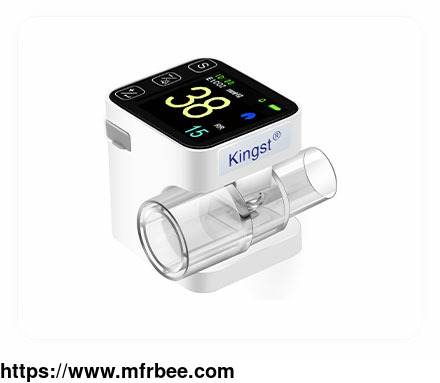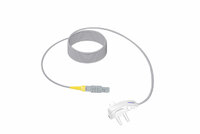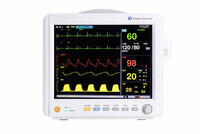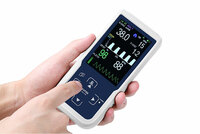EtCO2 Monitors
Specifications
The carbon dioxide monitor produced by Kingst adopts non-dispersive infrared spectroscopy technology (NDIR). Etco2 monitor uses are siginificantly wide. The et co2 monitor can measure the
concentration or partial pressure of carbon dioxide in the patient's exhaled breath, and then assist in judging the pathological characteristics of the patient.
Understanding EtCO2 Monitoring Devices
The end tidal co2 machine measures the partial pressure or concentration of carbon dioxide in the patient's exhaled breath to assist in judging the patient's ventilation status, spontaneous
breathing and circulation recovery, etc.,
And the products produced by Kingst are portable and can be used in various emergency situations. For example, first aid or pre-hospital first aid, as well as transportation inside and outside the
hospital, provide convenience for medical staff and greatly improve the medical level.
What is Capnography?
The capnography waveform can directly reflect the patient's ventilation status and dead space at this time. The waveform diagram is divided into four quadrants, namely the inspiratory phase,
ascending phase, alveolar plateau phase, and descending phase. The end of the alveolar plateau is the peak of ETCO2, which is also the point we monitor.
How to Read and Interpret end tidal co2 monitor for sale ?
The normal range of ETCO2 is 35-45mmHG or 4-6% or 4kpa-6kpa. The waveform is divided into four phase
The first phase: no gas participates in the interaction, 0 baseline
The second phase: the initial, rapid rise stage of exhalation
The third phase: slowly ascending, reaching the alveolar platform
The fourth phase: rapid descent to the beginning of inspiration.
From the waveform, we can judge the patient's ventilation and dead space, so as to provide clinical guidance.
What Does Low Etco2 Mean?
End tidal CO2 monitoring devices are used to measure the concentration of carbon dioxide in a patient's breath. A low end-tidal CO2 reading can indicate a decrease in alveolar ventilation or
reduced CO2 entering the alveoli. This can be caused by mechanical ventilation with excessive tidal volume, shock, hypothermia, or artificial ventilation with a slow frequency and too large tidal
volume. Tachypnea, a short peak phase, and low ETCO2 value may also occur with artificial ventilation where the frequency and tidal volume are too high. In clinical settings, low end tidal co2
meaning can indicate a problem with respiratory function, and healthcare professionals rely on EtCO2 monitoring to help diagnose and optimize treatment plans for their patients.
Why are End Tidal CO2 Monitoring Device Important?
EtCO2 monitoring devices, or EtCO2 monitors, offer a non-invasive and real-time functional detection index for assessing lung function. This technology is a significant advancement in non-invasive
monitoring, providing a clear indicator for respiratory support and management in numerous healthcare settings, including anesthesia patients, emergency departments, ICUs, and respiratory
departments. EtCO2 monitoring is essential and commonly recognized as the sixth basic vital sign alongside ECG, blood oxygen, blood pressure, body temperature, and respiration. Healthcare
professionals rely on EtCO2 monitors to help optimize patient care and ensure effective respiratory function.
EtCO2 Monitor Uses in Pre-hospital Medicine
Capnography monitor can be applied to emergency department, respiratory department, anesthesiology department, ICU, etc.
The purposes of our monitoring are: monitoring ventilation function; adjusting ventilator parameters and guiding ventilator evacuation; determining the position of tracheal tube; understanding
alveolar dead space and changes in pulmonary blood flow; evaluating circulatory function during CPR; airway positioning, etc.
For more information about etco2 waveform capnography and types of etco2 monitoring, please feel free to contact us!
- Country: China (Mainland)
- Address: 5-6 F, Building 3, No.27, Yongwang Road, Z-park Daxing Bio-medicine Industry Park, Dist. Daxing, Beijing, China
- Contact: Kingst com










